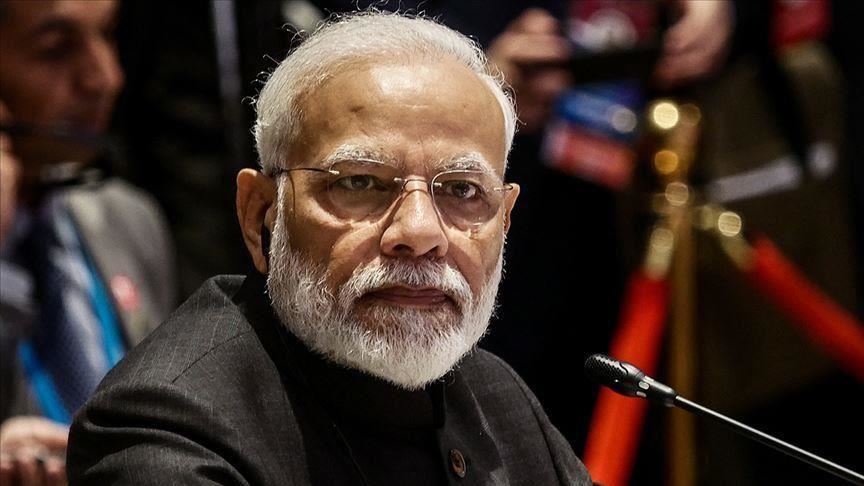India abandons ritual of eulogizing WWI soldiers
Prime Minister Modi breaks tradition of commemorating WWI soldiers, many of whom fought Gallipoli battle against Turkey

NEW DELHI
Breaking a tradition inherited from the British, India has abandoned the practice of commemorating soldiers killed during World War I.
Most of those soldiers representing iconic memorial of India Gate in the heart of Indian capital New Delhi were killed during the Battle of Gallipoli against Turkey and in the Third Anglo-Afghan War in 1919 when the new ruler Amanullah Khan declared total independence from Britain.
For the first time in 70 years, Prime Minister Narendra Modi did not visit the memorial of Amar Jawan Jyoti beneath the India Gate to kickstart the Republic Day ceremony on Jan. 26. He instead laid a wreath on the newly constructed National War Memorial, thus abandoning a century-old British custom.
Nearly 1.4 million soldiers from the Indian subcontinent were drafted by the British to join the Allied Powers campaign during World War I. At the Gallipoli Campaign (1915-16), more than 1,000 Indian soldiers lost lives. Their names are engraved on the India Gate walls. A fierce Turkish resistance had forced the Allied Powers to retreat from the Gallipoli peninsula.
“The soldiers who fought in World War I were drafted as mercenaries. They appeared as volunteers on British documents. I feel that it was the time that we commemorate the uniformed men who died serving our country, fought our own wars,” said Gautam Kaul, former director-general of Indo-Tibetan Border Police (ITBP), a paramilitary force.
Talking to Anadolu Agency, Kaul, who is also an expert on Delhi city’s history praised Modi for realizing that it was necessary to commemorate own soldiers, rather than those who fought someone else’s battle.
“It makes more sense for the prime minister to pay his respects to the National war memorial, rather to the colonial memorial India Gate,” he said.
-India Gate memorial for World War I
The India Gate, located on the eastern edge of the ceremonial axis of New Delhi, has names of 13,216 soldiers inscribed on it, who laid their lives protecting the British crown. Of these 12,260 are soldiers of the Indian descent, 959 British, and one Australian. These names include people of all religions as the Commonwealth War Graves Commission website states that there should be no distinction made on account of military rank, race, or creed.
The foundation stone for India Gate was placed on Feb. 10, 1921, by the then visiting Duke of Connaught, a decade later, when the British decided to shift colonial capital from the eastern city of Kolkata (formerly Calcutta) to New Delhi. The memorial was opened to the public in 1931.
Last week, two days ahead of the Republic Day, Maj. Gen. Alok Kakkar, announced that for the first time in India’s history, the prime minister will not visit the India Gate and instead will lay a wreath on the newly constructed National War Memorial which was opened to the public on Feb. 25, 2019.
At the War Memorial, Prime Minister Modi who kickstarted the Republic Day ceremony was received by the chief of defense staff and three services chiefs.
Spread over an area of approximately 40 acres, the National War Memorial comprises four concentric circles, named as -- the Amar Chakra, Veerta Chakra, Tyag Chakra, and the Rakshak Chakra -- with names of 25,942 soldiers inscribed in golden letters on granite tablets.
Anadolu Agency website contains only a portion of the news stories offered to subscribers in the AA News Broadcasting System (HAS), and in summarized form. Please contact us for subscription options.







